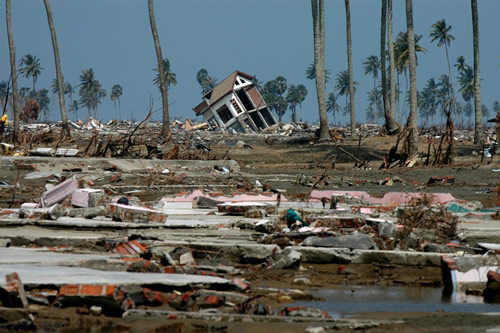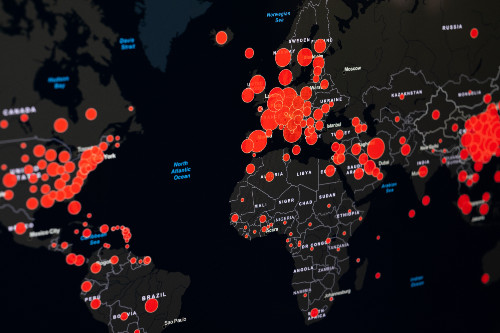From earthquakes to outbreaks - how supply chain networks are affected by catastrophe
A study of the 2011 Japan earthquake's impact on supply chain networks offers a glimpse of how supply chains may be affected by COVID-19.
Catastrophic supply chain disruptions can significantly damage the operational and financial performance of firms. Yet while there have been studies of supply networks’ vulnerabilities and resilience to supply chain disruption, it remains unclear how supply network structures change following a major disruption to supply chains. Considering a catastrophic disruption can pose a significant threat to a firm’s access to resources and knowledge in its supply network, this research can provide a clue what a post-COVID-19 supply networks would look like.
A study carried out jointly between Cass Business School and University of Tilburg investigates how firms’ supply network structures changed following the catastrophic supply chain disruptions caused by the 2011 Tōhoku earthquake and tsunami in Japan.
Analysis of the results suggest that firms which have experienced the disruption brought on by such events demonstrate reduced levels of supply network complexity compared to those that were not affected by it.
The study finds that:
- firms that experienced a disruption by the earthquake saw a reduction in the number of their suppliers compared to the firms that were not.
- firms experienced a disruption by the earthquake had reduced numbers of customers compared to the firms that did not report disruption.
The shrinkage of the supplier number is likely caused by the affected firm’s experience of recovering from a disruption during 2011. A large supplier, therefore complex, base could potentially increase its exposure to disruptions originated from its suppliers. Moreover, the affected firms found organising supply network level recovery efforts was difficult due to the sheer number of its suppliers. This means, the affected firm would start post-disruption supplier-base diet to ensure it would have more resilience in the future.
The reduction in the post-disruption number of customers is likely to be driven largely by existing and potential customer efforts to reduce complexity in their upstream supply networks. As a part of their own supply chain risk management strategies, customers of the firms that experienced severe supply chain disruptions may not retain those firms as suppliers. Similarly, potential customers may also be reluctant to establish new buyer-supplier relationships with firms that have experienced severe supply chain disruptions.
Moreover, the company-wide recovery efforts by the focal firm affected by disruption often require significant re-prioritisation of resources. This could result in a reduction in the amount of resources available for attracting new customers.
Managers therefore face the difficult question of how to balance supply network needs during normal business cycles with those experienced during disruptions. While striking an optimal balance is going to be difficult given the dynamic nature of the context,
awareness of the different realities is the first step in preparing for and managing the impact of supply chain disruptions.
This study is also relevant to the global disruption caused by the SARS-CoV-2 outbreak. The findings provide a glimpse of what post COVID-19 supply chains could look like.
The complexity of having many and inter-connected suppliers makes it difficult for managers to respond to COVID-19 induced supply chain disruptions quickly and effectively. A complex and highly inter-dependent supply chain also increases the chance that disruptions in their own company will be compounded by the disruptions faced by their suppliers and customers.
As a result, companies will approve strategic initiatives to reduce the supply network complexity. These may involve the consolidation of their supplier base, and an increase in "reshoring". At the same time, vital activities such as discovering new customers and suppliers will be relegated until some level of normality is restored.
The implications are significant. COVID-19 will likely cause a short-term disruption to the movement of products and parts but also long-term strategic damage to the affected firms by limiting the growth in the number of customers. The potential for additional future revenue generation as well as the discovery of new suppliers for improving its competitiveness will be severely curtailed. The consequences of this epidemic for business may be experienced for many years to come.
The working paper Catastrophic supply chain disruptions and supply network changes: A study of the 2011 Japanese earthquake from a supply network complexity view can be downloaded at the link below.




